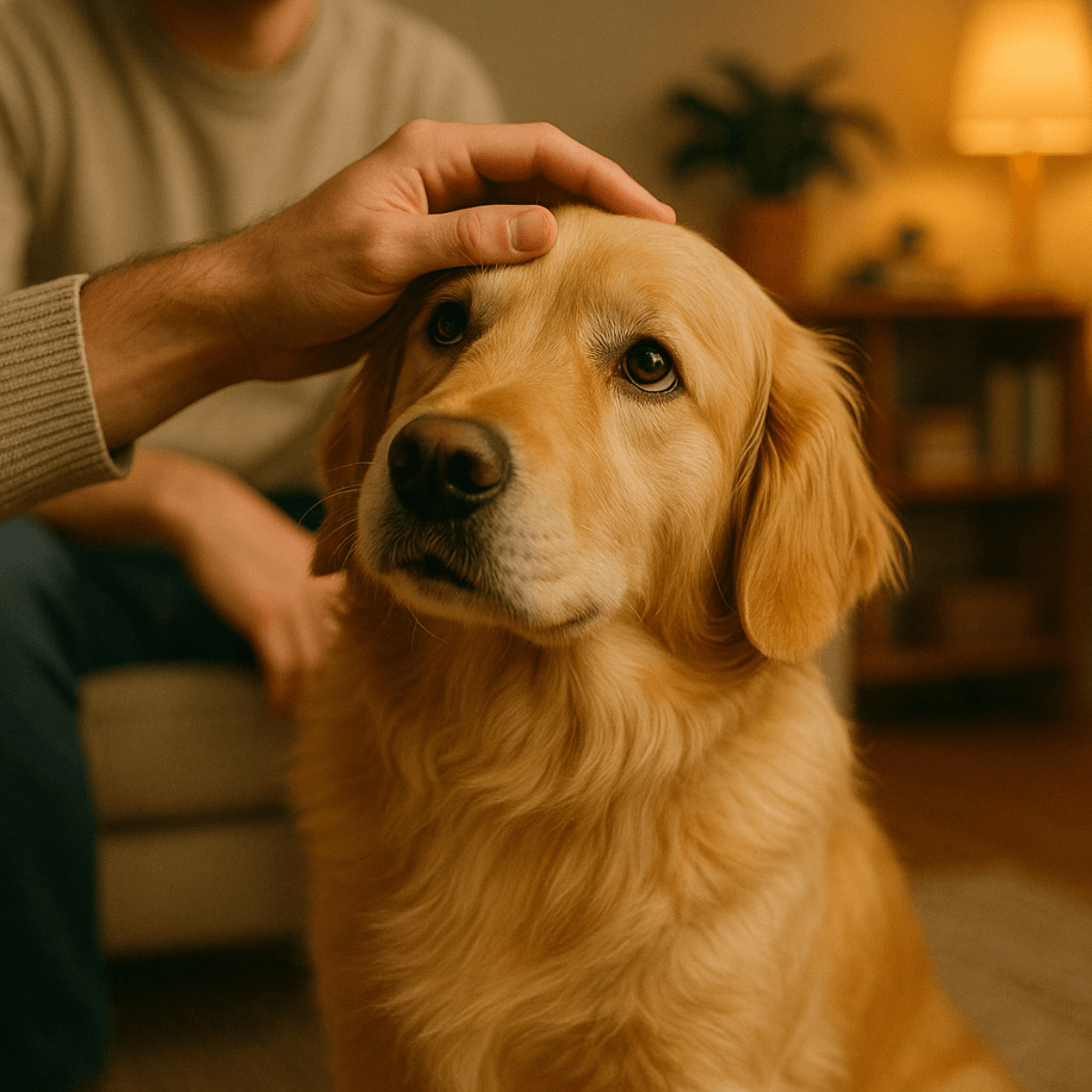
Adopting a dog from a shelter – how to prepare your home, cope with challenges, and raise a dog after a difficult life 🐾
Adopting a pet is one of the most significant decisions in a pet lover's life. It's not an impulse, it's not a whim—it's a conscious choice that carries years of responsibility. It's something much deeper than simply adopting a dog or cat. It's opening your home, your time, and your heart to a creature that may never have experienced true safety before.
“You can't change the whole world, but you can change the whole world of one animal.”
It is an act of love because you choose to give over to take.
It's an act of courage because you're taking on a being with a history that's often hard to even imagine.
Ultimately, it's an act of responsibility , because from that moment on, you become the world to someone who previously had nothing. And while adoption conjures up the perfect image in many of our minds—a dog snuggled on the couch, a cat sleeping on the windowsill in the sunshine—the reality can be different.
Before that magical moment of intimacy arrives, one must navigate a sea of uncertainty, build a bridge of trust, defuse the mines of trauma, and quiet the echoes of past hurts. Few realize that the path to this dream image leads through patience, understanding, and a willingness to face challenges .
Adoption isn't an "easier" option. It's a path chosen by people who are strong in spirit, rich in heart, and ready for true change —not only in the animal's life, but also in their own. Because the truth is: by adopting a pet who has been through a difficult time, you're changing two lives. Not just theirs. Yours, too.
In this article we will tell you:
- what adoption really means ,
- how to prepare for life with a dog or cat after a difficult experience ,
- how to deal with emotions, fears and difficulties ,
- and how to build a lasting, trust-based bond step by step.
🔍Why is it worth adopting a dog from a shelter?
According to the Viva! Foundation, there are over 100,000 homeless dogs and cats in Poland, and in many shelters , nearly 70% of the animals spend their entire lives there , never finding a home. Some have been abandoned, others are victims of abuse, and still others were born in shelters.
Animals that have been through trauma are often:
- mixtures of many breeds – with wonderful, unique characters,
- dogs with mental or physical injuries ,
- adult or elderly animals that have a harder time finding a home.
❤️ Adoption is the beginning of a shared story
Every dog that comes home brings with it a baggage of experiences . Some are delicate and fragile, others withdrawn or aggressive. But they all long for the same thing: safety and love . Learn the story of Luna, a dog from a small shelter near Białystok. For two years, Luna sat in the corner of her kennel, ignored by visitors, growling and terrified. Today, she lives in Gdynia, walks on the beach, plays with children, and sleeps cuddled up to her caregiver. But before that happened, months of anxiety, sedatives, behavioral visits, and sleepless nights passed . This story—a very typical one, by the way—shows that adoption is no fairy tale. It's a shared struggle for a new life .
🧠 What to expect after adoption?
Some animals adopted from shelters adapt quickly. Others take months to trust.
Here are the most common symptoms that may appear after welcoming a pet into your home:

| Symptom | What does it mean? | What to do |
| Constantly hiding | Strong fear and insecurity | Don't force contact, let him observe |
| Growling, hissing | Defensive reaction, fear of pain | Keep your distance, avoid sudden movements |
| Taking care of yourself at home | Stress, lack of knowledge of the rules | Establish a routine, reward good behavior |
| Excessive activity, chasing, jumping | Relieving tension | Organize safe games and walks |
🏠 Home Preparation – A Safe Haven
Your home should become a haven, not a trap . Think like a pet: new smells, new sounds, new people, new rules. This is a huge stressor.
Checklist:
- 📦 Quiet haven – one quiet room or corner where no one will disturb you.
- 🧸 A bed or blanket with the scent of the shelter (don't wash it at first - it's a familiar smell to them).
- 🍲 A permanent feeding place – preferably away from traffic routes.
- 🪟 Secure windows and balcony doors (especially for cats).
- 🛑 Closed baskets and cabinets – many dogs, after being exposed to the elements, "rummage" out of fear or boredom.
📅 The first weeks – rituals, routine and gentleness
In the first 2-3 weeks, building trust is key. Work slowly and consistently. Your pet learns that he no longer needs to fight or flee.
Daily routine:
- Fixed feeding times ,
- Walking at the same times ,
- Calming rituals – e.g. evening petting or playing,
- Avoiding excess stimuli – noise, guests, changes.
If your pet is afraid of being touched, let it observe you from a distance . When it approaches on its own, reward it with a gentle voice and a treat.
🐶 How to Raise a Dog After a Lifetime of Troubles – Patience, Understanding, and Small Successes
Raising an adopted dog is n't about training on command, but rather building a relationship . It's a journey whose goal isn't a perfectly trained dog, but rather a dog that's calm, trusting, and safe with you . Shelter dogs have diverse stories behind them—from being homeless to living in a kennel without human contact. Therefore, raising them is more than just training—it's therapy and a shared rediscovery of the world .
🧭 Step 1: Understanding that your dog doesn't know what "normal" looks like
Before you start teaching your dog anything, accept one thing: he doesn't know the world that is your everyday reality .
👉 A vacuum cleaner can be a monster.
👉 Television – the sound of war.
👉 The street – a chaos of sounds and smells.
That's why the first few weeks are a time of observation , not expectation. Give your dog space and introduce him to the world slowly and gently.
🐾 Step 2: Building rapport and basic trust
Don't teach "sit" and "down" if your dog is afraid to take two steps towards you. Instead:
- Spend time with him without pressure – sit on the floor, read a book, without looking directly at him.
- Speak to it in a calm, low tone – the voice has enormous therapeutic power.
- Observe stress signals : licking your nose, yawning, avoiding eyes, withdrawing.
"My dog wouldn't let me touch him for the first week. It wasn't until he started sitting next to me in the kitchen that I knew we could start building something more." – Marta, caregiver of an adopted Labrador
🎓 Step 3: Positive Training – Step by Step
Once your dog begins to trust you, you can introduce gentle exercises and training . But remember, it's not about discipline, but communication.
✅ Practical tips:
- Avoid flexi leashes – the sound of unwinding and the lack of control can stress your dog.
- Use a classic webbing or lanyard (min. 3-5 m) – it gives you space but does not cause anxiety.
- Clicker and rewards – the positive method reinforces good behavior and builds a sense of security.
- Clear commands – no more than two at a time : for example, "come" and "sit." Add the rest gradually.
🔁 The 3-repetition-a-day rule – no more than 5–10 minutes of each lesson, 3 times a day. A dog quickly becomes mentally exhausted after a tough workout.
🌳 Step 4: Walking as Therapy

Walking your adopted dog is more than just a pee break . It's a time of socialization, exploration, and stress reduction. But it's also often a source of challenge.
🔹 What to avoid:
- Busy streets,
- crowds of people and bicycles,
- dogs without a leash.
🔹 What works best:
- Sensory walks – peaceful strolls through meadows and forests, with the possibility of sniffing.
- Lanyard and hip belt – allow the dog to move away, but without feeling threatened.
- Walking routine – going out at the same times gives your dog a sense of stability.
🧠 Are you familiar with "nosework"? It's a scent game that's great for calming your dog and building their confidence. You can start it at home—all you need are a few treats hidden in boxes.
😬 Common behavioral problems and how to solve them
| Problem | What to do | What to avoid |
| Pulling on a leash | Learning to heel calmly with rewards | Pulling the leash, screaming |
| Barking at other dogs | Creating distance, rewarding for ignoring | Bringing the dog closer "by force" |
| Food from the ground | The "leave it" command and learning self-control | Screaming, struggling |
| Hypervigilance, anxiety | Training in quiet places, working with a behaviorist | Exposure to strong stimuli |
🧑⚕️ Petto Recommendation: If the problem worsens after a few weeks or your dog reacts aggressively, seek help from a certified behaviorist . Many also offer online consultations.
➡️ Website: COAPE Behaviorists - COAPE Polska On this page, you'll find a complete list of COAPE graduates – one of the most renowned and ethical behavioral schools in Europe. You can search for specialists by voivodeship.
📘 Example of a daily schedule with an adopted dog
| Time | Action |
| 7:00 | Walk – 15 min + rewards for walking calmly |
| 8:00 | Feeding – in a bowl or on a sniffing mat |
| 10:00 | Exercise 1 command + scent game |
| 14:00 | Second walk – longer, quiet area |
| 5:00 p.m. | Relaxing with a person – lying down, contact |
| 20:00 | Short exercise + evening fun + last walk |
❤️ Summary: Parenting is a relationship, not domination
An adopted dog isn't a "repair project." It's a being who needs a relationship based on respect and patience . Instead of focusing on obedience, focus on emotional safety . Once your dog trusts you unconditionally, everything else—commands, walks, contact—will come in time.
"First comes peace. Then eye contact. Then a smiling tail. And finally, a home that is no longer temporary."
🧩 Problems? It's a natural part of the process.
Not every behavior can be "fixed." Sometimes you just have to accept your pet's differences .
Problems worth consulting:
- Aggression towards family members ,
- No appetite for many days ,
- Auto-aggression – e.g. licking the fur to the point of drawing blood,
- Severe separation anxiety – howling, destroying, scratching doors.
🤝 When to ask for help?
Whenever you feel helpless, reach out for support.
You can get help from:
- animal behaviorist (e.g. online or locally),
- a trainer with a positive approach,
- veterinarian – sometimes supplements or medications are needed,
- adoption foundations – many of them offer post-adoption support .
🐾 Stories that touch – your support really matters
Thanks to adoption, thousands of animals are transformed beyond recognition. They gain not only a home over their heads, but a new identity. "I adopted a cat named Misia. For the first three weeks, she didn't leave under my bed. Today, she follows me everywhere, purrs, sleeps at my feet, and shakes my paw." – Magda from Krakow
📌 Summary – Love is patient
Adoption isn't heroism. It's not a gesture of grandeur or heroism. It's a quiet, daily decision to be present. To open the door each day, not only to your home, but above all to your heart. It's a process. Sometimes difficult, frustrating, full of tears, doubt, and helplessness. But at the same time, it's full of small, moving victories that, over time, become the foundation of a true bond.
Don't expect immediate gratitude. Don't expect your dog to immediately start wagging its tail or your cat to jump into your lap. Adoption isn't a fairy tale – it's a process of building trust with someone who may have been repeatedly let down by others. But therein lies its extraordinary power – because all the best things come slowly.
Gratitude will appear unexpectedly:
-In a look that is no longer afraid of you.
-The fact that the dog does not run away at the sound of the keys, but waits at the door.
-In his muzzle resting trustingly on your knee during movie night.
-In the purring of a sleeping cat that was hiding under the bed just a week ago.
-In a quiet sigh of relief—yours and his—that you are together. And that you no longer have to be afraid.
Because adoption doesn't change everything immediately. But it changes everything—forever.
“Don't be the person who wants a pet, be the person the pet needs.”




 https://petto.com.pl/
https://petto.com.pl/